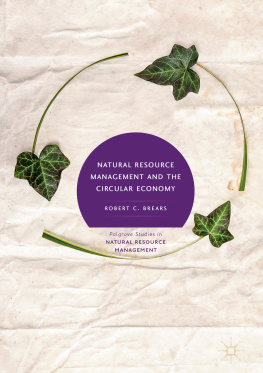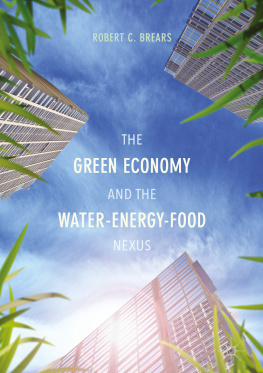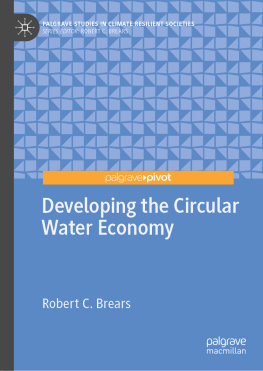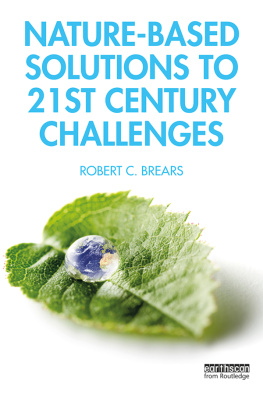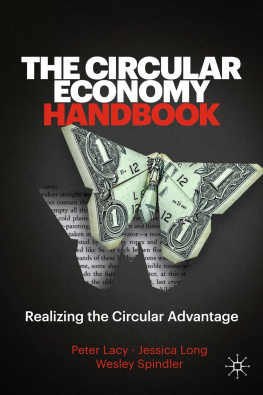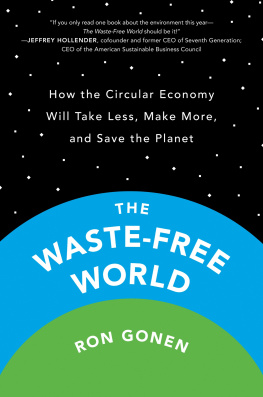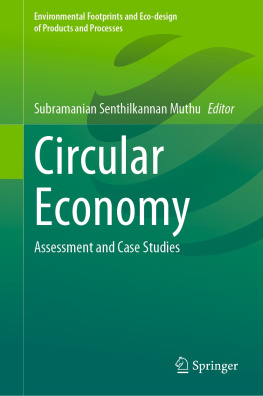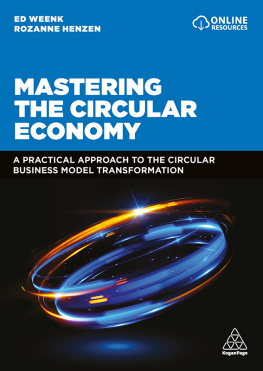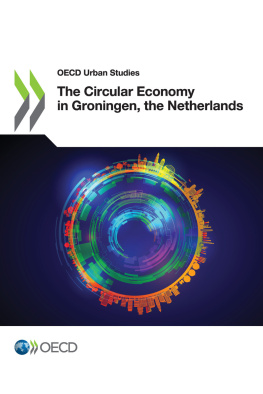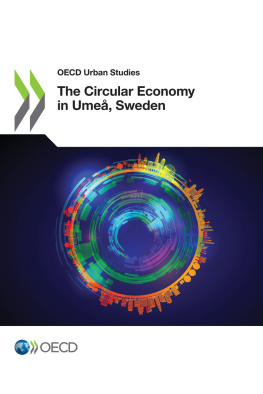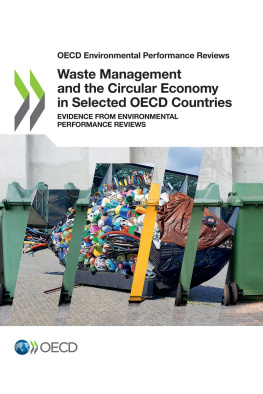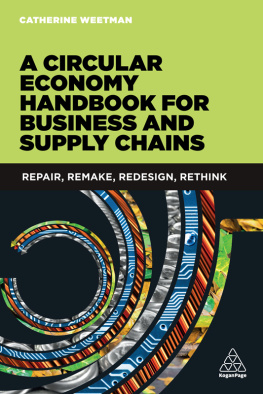In our current economic model, manufactured capital, human capital, and natural capital all contribute to human welfare by supporting the production of goods and services in the economic process, where natural capital the worlds stock of natural resources (provided by nature before their extraction or processing by humans)is typically used for material and energy inputs into production and acts as a sink for waste from the economic process. As such, natural resources in the linear economic model:
Become inputs : Material resources used in the economy come from raw materials that are extracted from domestic natural resource stocks or extracted from natural resource stocks abroad and imported in the form of raw materials, semi-finished materials, or materials embedded in manufactured goods. Material resources are extracted with the usable parts of the resources entering the economy as material inputs where they become priced goods that are traded, processed, and used. Other parts remain unused in the environment and are called unused materials or unused extraction.
Become outputs : After use in production and consumption activities, materials leave the economy as an output either to the environment in the form of residuals (pollution, waste) or in the form of raw materials, semi-finished materials, and materials embedded in manufactured goods.
Accumulate in man-made stocks : Some materials accumulate in the economy where they are stored in the form of buildings, transport infrastructure, or durable and semi-durable goods such as cars, industrial machinery, and household appliances. These materials are eventually released in the form of demolition waste, end-of-life vehicles, e-waste, bulky household waste, and so on, which if not recovered flow back to the environment.
Create indirect flows : When materials or goods are imported for use in an economy, their upstream production is associated with unused materials that remain abroad including raw materials needed to produce the goods and the generation of residuals. These indirect flows of materials consider the life cycle dimension of the production chain but are not physically imported. As such, the environmental consequences occur in countries from which the imports originate
Linear Economy Challenges
While the current linear economic model has generated an unprecedented level of growth, the model has led to constraints on the availability of natural resources due to rising demand, in addition to the generation of waste and environmental degradation from a variety of challenges.
Economic Growth
The world economy is projected to grow on average by just over 3 percent per annum over the period 20142050, resulting in the global economy doubling in size by 2037 and nearly tripling by 2050. During this time, there will be a shift in economic power away from the established advanced economies in North America, Europe, and Japan towards the emerging economies. For example, rapid economic growth in Mexico and Indonesia could result in these countries having larger economies than the UK and France by 2030, in purchasing power parity terms, while other economies including Nigeria and Vietnam could grow at 5 percent or more per annum by 2050 compared to projected growth of 1.52.5 percent in advanced economies.
Changing Consumption Patterns
As income levels rise, changes in spending patterns occur when individuals move from a very low income (annual wages of less than USD $1000 per annum) to a lower middle income (between USD $3000 and USD $5000). For instance, as income levels rise, individual spending on food falls from more than 40 percent of the total income to around 10 percent. Regarding expenditure on types of foods, there is a strong positive correlation between the level of income and the consumption of animal protein with the consumption of meat, milk, and eggs increasing at the expense of staple foods.
Raw Material Scarcity
With rising income levels and economic growth around the world, raw material extraction is increasing to meet demand for both high-tech products and everyday consumer products including mobile phones, synthetic fuels, lithium-ion batteries, thin-layer photovoltaics, and so on. It is estimated that annual global material extraction will reach 183 billion tonnes by 2050, which is more than double the amount in 2015.
Volatility of Resource Prices
During most of the twentieth century, resource prices, including food, energy, and steel, declined despite rising populations and economic growth because of new low-cost sources of supply and technological innovation. However, in the first decade of the twenty-first century alone, price rises have varied significantly; for example, energy prices have increased by 190 percent, food prices by 135 percent, and material prices by 135 percent. The volatility of food, agricultural raw materials, and metal prices has also increased over the period 20002010, with the average annual volatility of resource prices being more than three times that over the course of the twentieth century and more than 50 percent higher than in the 1980s. Over the next quarter century, there will likely be resource-related shortages due to a variety of factors including an increase in the number of middle-class consumers, increased demand for new sources of supply, and extraction becoming more challenging and expensive.
Population Growth
In 2017, the worlds population reached 7.6 billion with the world adding 1 billion inhabitants over the past 12 years. Sixty percent of the worlds people live in Asia, 17 percent in Africa, 10 percent in Europe, 9 percent in Latin America and the Caribbean, and the remainder in North America and Oceania . The worlds population is projected to reach 8.6 billion in 2040 and increase to 9.8 billion in 2050 and 11.2 billion in 2100. Between now and 2050, more than half of this growth will occur in Africa: of the additional 2.2 billion people who may be added between 2017 and 2050, 1.3 billion will be added in Africa. Globally, much of the overall increase in population between now and 2050 will occur in either high-fertile countries or in countries with large populations. Between now and 2050, it is estimated that half of the worlds population growth will occur in just nine countries: India, Nigeria, Democratic Republic of Congo, Pakistan, Ethiopia, Tanzania, the United States of America, Uganda, and Indonesia (in order of their expected contribution to total growth).

